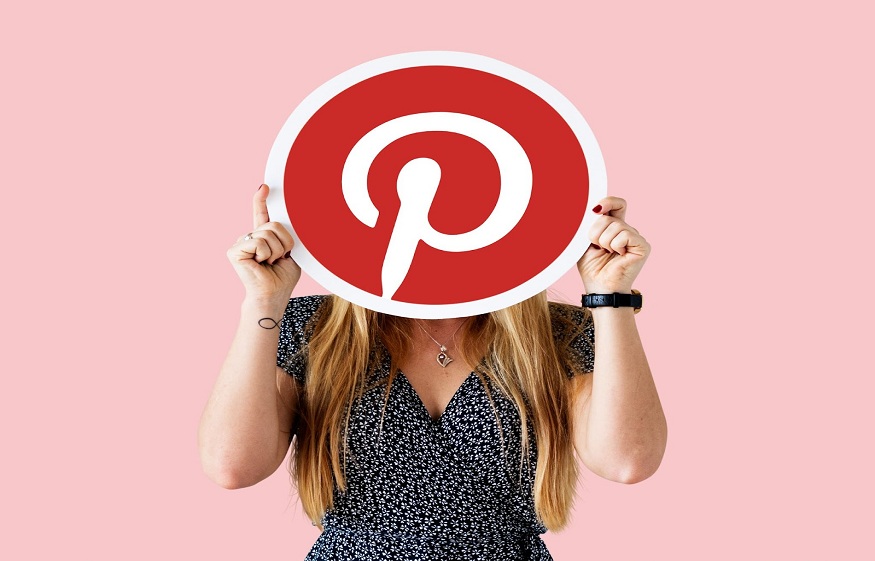
Maximizing Your Pinterest Presence: The Power of Social Media Publisher Tools for Effective Marketing Strategies
How to Make Pinterest business Account:
Creating a Pinterest business account offers you access to the resources you need to manage a successful brand social media network, and there are several advantages to doing so. While a personal Pinterest account allows you to create up to 2,000 boards and up to 200,000 Pins, you will not be able to receive performance analytics or run advertisements unless you have a business account.
Fortunately, setting up a Pinterest business account is a breeze. And, if you currently have a personal Pinterest account, you may quickly convert it to a business one. If you prefer to keep your accounts separate, just create a connected Pinterest business account.
Steps to Make a Business Account on Pinterest
Follow these steps to establish a new Pinterest account that is not tied to an existing personal account:
- Visit business.pinterest.com and click the Signup icon in the upper right corner.
- Enter your company’s email address, password, and age, then click Create account.
- Complete the Build your profile areas and then click Next.
- After that, complete the Describe your business box and click Next.
- Choose whether or not you wish to run Pinterest advertisements and then click Next.
- Next, select where you want to begin, or click the X to go to your Pinterest profile and begin saving Pins.
How to Make Money with Pinterest
Now that you’ve learned how to set up your own Pinterest business account, let’s go over some of the fundamentals of utilizing Pinterest for business.
1. Begin making your own pins.
Creating your own Pins is the lifeblood of Pinterest. There are several methods for making your own Pins. Begin by making new Pinterest boards. You could wish to make pinboards for each of the items you sell, as well as for numerous industry issues or topics related to the services you give.
Here’s an example of a board from my own Pinterest business account.
My pinboards, as a social media and digital marketing writer, are all about various aspects of the marketing business.
Consider what sorts of pinboards might be appropriate for your brand and begin constructing them. You might also look at what rivals or brands in a comparable industry have done.
After creating a new board, open it and then click the More ideas icon towards the top. You may use this section to supplement your Pinterest board with pre-existing ideas, photos, and links.
However, if you’re making boards where you just want your own items or blog articles to appear, you’ll need to start from scratch. There are two approaches to this.
How to Make a Pinterest Pin
First, go to Pinterest and pick Create Pin from the Create option.
Then you’ll be led to a screen where you can enter all of your PIN information.
You must do the following:
Choose the board to which you wish to publish the Pin (you can even create a new one while you’re here).
- Provide a title and description for your Pin.
- Add alternative text for accessibility.
- Include a link to where your pin will take you.
- Include a picture or video.
- Select whether to publish or schedule your Pin (more on Pin scheduling shortly)
How to Make a Pinterest Pin from Your Website
The following method is to save Pins directly from your website. You may add the option to store Pins directly on your website or download the Pinterest Chrome extension (more on this in the next section). When you use the Pinterest Chrome extension, the “Save” button appears whenever you hover your cursor over an image on a website. Click the button, then select the board to which you wish to store it.
Then go to your profile and make any necessary changes to the Pin title and descriptions, especially if you want to include more keywords for greater search visibility.
2. Optimize your Pinterest pins for SEO.
Because Pinterest is a visual search engine, you must consider keywords while building your Pinterest profile and storing Pins. You don’t want to keyword stuff, just as in conventional SEO. Instead, incorporate some of the more important terms that people search for while looking for your items in your profile, Pin descriptions, and board descriptions.
The following aspects of your Pinterest profile, pinboards, and Pins should be optimized:
Name on Pinterest: “Chloe West | Social Media & Digital Marketing Tips” is mine, and it includes what I do. Niche photography group The Simply Elegant Group chose to title their profile as “The Simply Elegant Group | Destination Wedding Planners.”
Include a few top-level keywords (such as your industry or product line) in your Pinterest bio to convey what you do.
Don’t be ambiguous with your Pinterest board titles. Instead, make concise board titles that inform visitors and the Pinterest algorithm about what the board is about.
Descriptions of Pinterest boards: Insert a few board-specific phrases into the board description when constructing your pinboard to clarify what sorts of Pins will dwell there.
Pin titles: Include simple titles with your Pins. This might be the title of a blog article or a product.
Pin descriptions: Make it easier for others to locate your Pins by providing concise descriptions that incorporate common search terms.
3. Plan ahead of time for Pins
As we’ve seen, if you make a Pin on Pinterest’s website, you can now schedule it. You may, however, simply plan Pins with a service like Sprout Social while simultaneously scheduling your other social media material. This simplifies the management of all your social profiles, including Pinterest.
You can keep a constant posting schedule for your Pins by scheduling your Pinterest material, regardless of whether you’re online or not. Instead than signing onto Pinterest every day, you may schedule a whole week’s worth of material at once.
4. Monitor your Pin performance.
Pinterest business accounts allow you to examine overall account and Pin performance. This allows you to see how many individuals you’re reaching and how much traffic your Pinterest account is driving to your website.
After you’ve authenticated your website, you can also see the performance of your individual Pins to ensure that they’re as popular with your target demographic as other Pins you’ve saved.
You can also track Pin performance based on a variety of measures, including as impressions and interactions, as well as clicks and saves.
5. Distribute Pins to reach a larger audience
Pinterest also has its own advertising platform, via which you may promote certain Pins, products, blog posts, lead magnets, and other content. To access the advertising manager, go to the top navigation menu and select Ads, then Create ad from the dropdown menu.
This guide will assist you in choosing your goal, identifying your audience, budgeting, and other tasks. If you want a simpler ad layout, choose the Switch to 3-step ad creation option in the top right to promote an already-existing pin.
Power of Pinterest Marketing Tools for Effective Marketing Strategies:
Social media has transformed the way organizations approach marketing, and publisher tools provided by social media platforms have increased the influence of social media marketing even more. These tools offer a variety of capabilities that allow firms to better interact with their consumers and adjust their marketing tactics to their individual needs.
Pinterest is one of the more adaptable, cost-effective, and powerful marketing platforms for businesses trying to convert more leads, attract traffic to their websites, and raise brand recognition. Furthermore, Pinterest users have the greatest purchase intent of any social media user.This can be done with the Pinterest marketing tool.
Here are some ideas on how to leverage social media publisher tools to develop effective marketing strategies:
- Social media publisher tools enable companies to plan their material in advance, ensuring that their social media profiles stay active even when they are not actively publishing. This is especially useful for enterprises with many time zones or a worldwide clientele.
- Social media networks include advanced audience targeting capabilities, which may be used to provide material to specific audiences. Businesses, for example, may tailor their content based on age, gender, hobbies, geography, and other characteristics to ensure that it reaches the correct individuals.
- Analysis of performance: Social media publisher solutions give businesses real-time data about the performance of their content. This information may be utilized to make educated judgments regarding future content generation and distribution, allowing firms to fine-tune their marketing strategy over time.
- Sponsored promotion: Many social media publisher tools enable businesses to market their content to a larger audience by utilizing paid promotion. This may be a highly successful method of increasing brand recognition and driving visitors to a website or other online platforms.
- Social media publisher tools enable businesses to collaborate with influencers, other brands, and content creators to broaden their reach and reach new audiences. This may be an effective strategy to improve brand reputation and engagement.
Overall, social media publisher tools have the potential to revolutionize the way organizations approach marketing and interact with their consumers. Businesses may design highly focused, successful marketing plans that deliver actual results by harnessing the characteristics and capabilities of these platforms.



